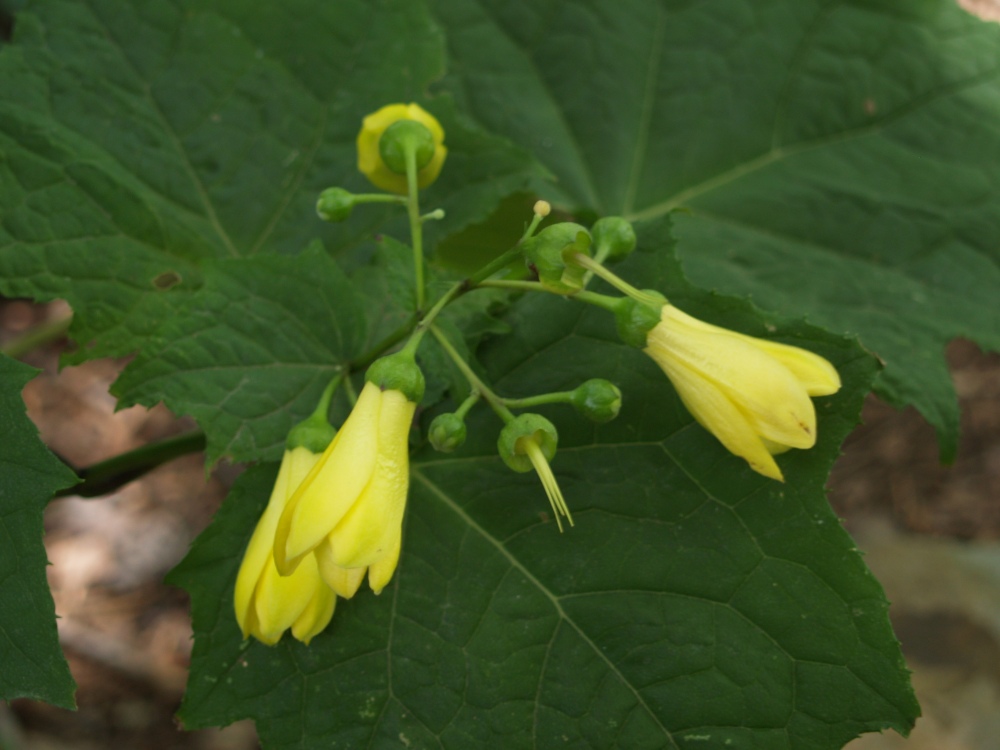Over my wife’s incredulous laughter, I claim patience, while fidgeting to get outdoors after the recent spell of mild temperatures. At the start of February, already winter seems overly long, though alternating periods of mildness and cold are typical of the Virginia winter, and five more weeks of varying degrees of cold are expected.

In my anxiousness, I have begun setting out additions to the rear garden, stripping sod from an area of the small lawn. A Persian ironwood (Parrotia persica), that suffered in too much shade, has been dug and transplanted along with a yellow leafed winter hazel (Corylopsis spicata ‘Ogon’, above) and a variegated ‘Purple Glaze’ star anise (Illicium anisatum ‘Murasaki no Sato’, below). Both failed to thrive, and in failing health it is hoped that the new location might provide the remedy.

The Chinese species of our southeastern native star anise is of questionable cold hardiness, and though it has survived winters colder than the current one, it struggled in its previous location for undiagnosed reasons. The sad condition of the winter hazel is more easily explained since it was rescued several years ago from a spot that was too damp for its liking, moved to a temporary location, then forgotten. The transplant to a more suitable sunlight exposure is long overdue.
While a cloudy, chilly February afternoon is not preferred for outdoor labor, this is ideal for transplanting. A thin crust of frozen ground was easily broken through, with thawed and slightly damp soil below. I expect the transplant of the small tree and two shrubs will be successful, though time will tell if the new location will rejuvenate this trio to good health.

Also unclear is where two tree peonies and several perennials that are ordered for spring delivery will fit into this scheme. Perhaps a bit more sod will have to be carved out, but that will be a project for another day, the next time my patience wears thin.
My old peach tree was also planted ‘temporarily’ and then forgotten. That was in December of 1985! It has been very productive and happy since then.
I have many plants in less than ideal situations. Most do well, but occasionally not. Sometimes I get around to moving a struggling plant, but most often not.
Remember Dave…”patience is a virtue!” 😀